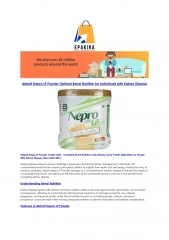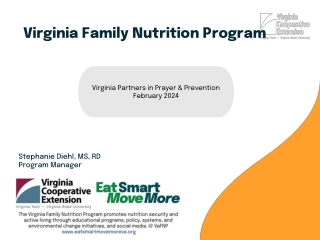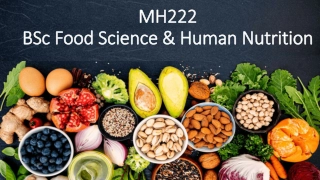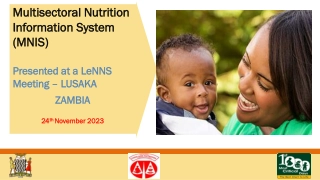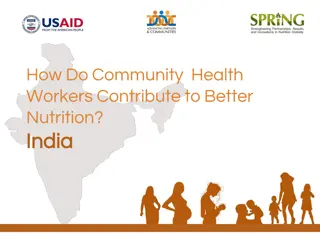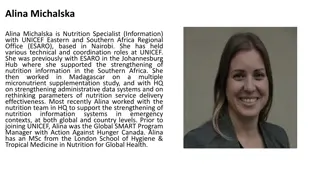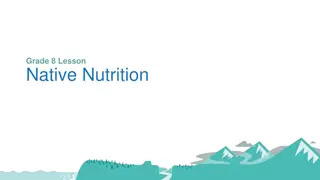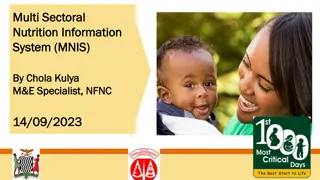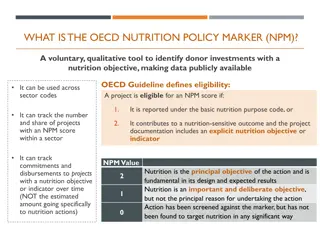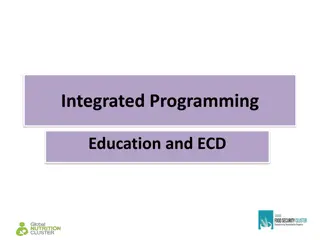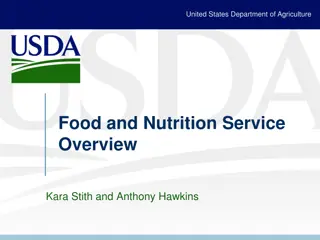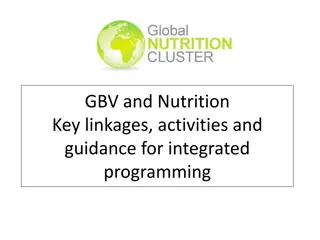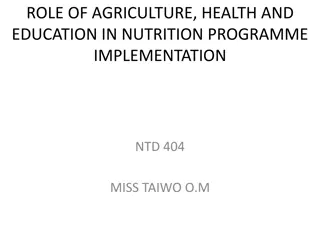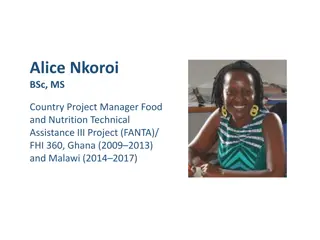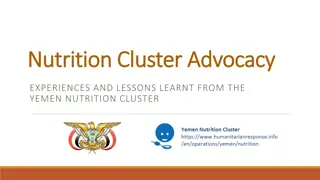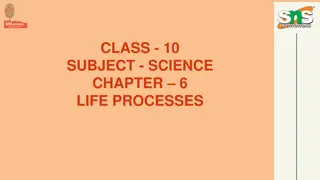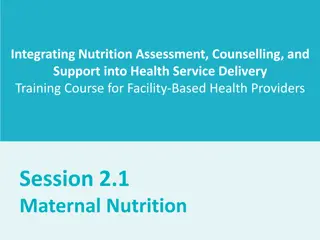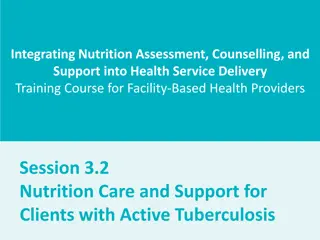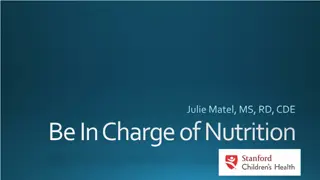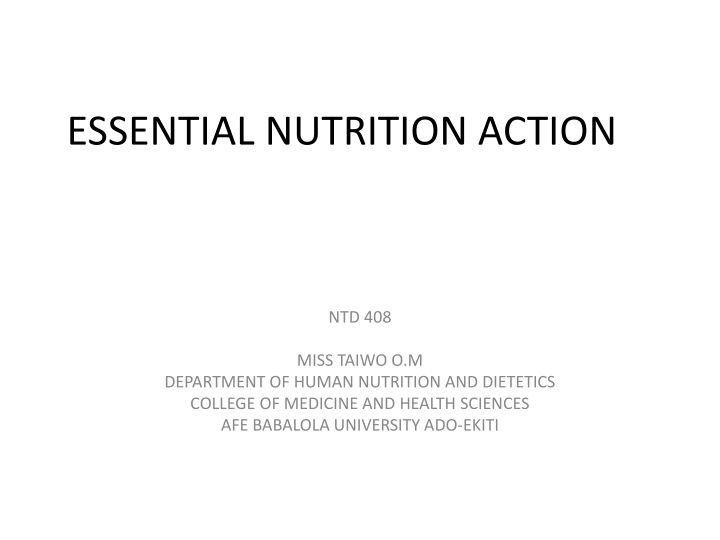
Essential Nutrition Actions: Promoting Health and Well-Being
The Essential Nutrition Actions (ENA) framework focuses on delivering essential nutrition interventions and messages to individuals at different stages of life, promoting healthy practices such as proper nutrition for women, breastfeeding, complementary feeding, care for sick and malnourished children, and anemia prevention. This framework, established in collaboration with USAID, WHO, and UNICEF, aims to reduce missed opportunities in delivering vital nutrition services and information.
Download Presentation

Please find below an Image/Link to download the presentation.
The content on the website is provided AS IS for your information and personal use only. It may not be sold, licensed, or shared on other websites without obtaining consent from the author. If you encounter any issues during the download, it is possible that the publisher has removed the file from their server.
You are allowed to download the files provided on this website for personal or commercial use, subject to the condition that they are used lawfully. All files are the property of their respective owners.
The content on the website is provided AS IS for your information and personal use only. It may not be sold, licensed, or shared on other websites without obtaining consent from the author.
E N D
Presentation Transcript
ESSENTIAL NUTRITION ACTION NTD 408 MISS TAIWO O.M DEPARTMENT OF HUMAN NUTRITION AND DIETETICS COLLEGE OF MEDICINE AND HEALTH SCIENCES AFE BABALOLA UNIVERSITY ADO-EKITI
INTRODUCTION The Essential Nutrition Actions (ENA) framework was originally developed with the support of USAID, WHO and UNICEF, and has been implemented across Africa and Asia since 1997 It promotes a nutrition through the life cycle approach to deliver the right services and messages to the right person at the right time using all relevant program platforms. It provides an operational framework for reducing missed opportunities both within and outside the health system for delivering nutrition messages and services. Its proven interventions and partnership strategies are also the foundation for Scaling Up Nutrition
KEY MESSAGES 1. Womens Nutrition For adolescents and women: the importance of the healthy timing and spacing of pregnancy, consumption of diversified diet and/or of fortified foods (commercial and/or in-home fortification). During pregnancy and lactation: increased protein, caloric and micronutrients (Vitamin A, Iron, Zinc) intake, dietary change to increase iron absorption, rest during pregnancy, and the lactation amenorrhea method (LAM) of contraception..
2. Breastfeeding during the first 6 months of life: early initiation of breastfeeding (immediately after birth) and exclusive breastfeeding for the first 6 months, and infant feeding in the context of HIV. 3. Complementary feeding from 6 months: (appropriate quality, frequency, diversity) with continued breastfeeding for up to two years and beyond, consumption of fortified foods (commercial and/or in-home fortification), responsive feeding, food hygiene, and recommendations for HIV positive children and children of HIV positive mothers who are unable to breastfeed;
4. Nutritional care of sick and malnourished children: Mother care for low birth weight infants, feeding more during and after illness, provision of vitamin A and treatment of diarrhea with low-osmolarity ORS and zinc supplements, integration of all aspects of the community-based management of acute malnutrition (CMAM) for treatment of moderate and severe acute malnutrition. 5. Prevention and control of anemia: Among women: increased dietary intake of iron-rich or enhancing foods, iron-folic acid supplementation during pregnancy, post-partum and more routinely by women of childbearing age, intermittent preventive treatment (IPT) for malaria and de-worming treatment during pregnancy, use of insecticide-treated bed nets (ITNs), and delayed cord clamping at birth. Among children: delayed cord clamping at birth, implementation of the Integrated Management of Childhood Illness (IMCI) algorithm and integrated Community Case Management (iCCM) of malaria, diarrhea, pneumonia, anemia and acute malnutrition, use of ITNs, de-worming from age 12 months, increased dietary intake of iron-rich or enhancing foods from age 6 months, and iron supplementation where indicated.
6. Prevention and control of vitamin A deficiency through breastfeeding, high dose supplementation of children ages 6-59 months and of women post- partum where appropriate, low dose supplementation during pregnancy where indicated. 7. Prevention and control of iodine deficiency through promotion of iodized salt or through supplementation in the absence of scaled up iodized salt program.

